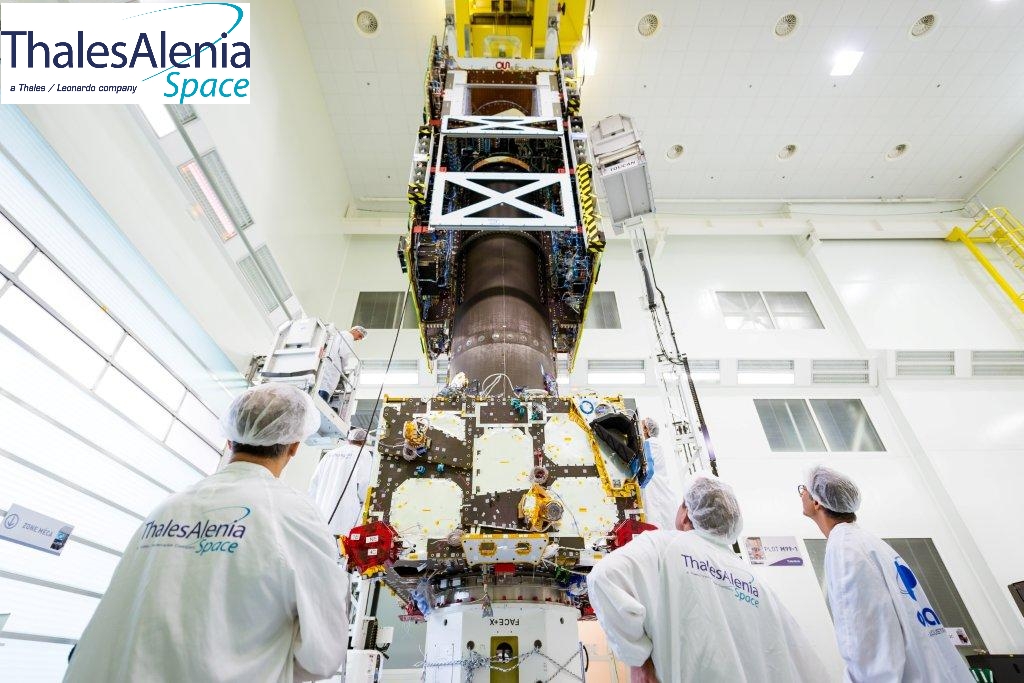-
StatusCompleted
-
Status date2018-07-26
-
Activity Code4A.047
The purpose of the development is to extend the range of the SPACEBUS™4000C platform family to accommodate payloads up to 14 kW consumption and/or 1 ton dry mass.
The key issues related mainly in the two main developments of SPACEBUS Performance:
- The introduction of hybrid propulsion
- The introduction of an innovative Communication Module concept able to support capacitive HTS payloads
Benefits of this development are double: increase in the family range of payload capacity and reduction of the launch cost by introduction of electrical propulsion. Those benefits come along standardization effort at SM level and introduction of a capacitive and flexible architectural concept at CM level.
In order to answer to the different performance demands of high capacity platforms, THALES ALENIA SPACE has extended the SPACEBUS™4000C Evo1 family. This extension is based on the strong SPACEBUS™4000 heritage with many flight successes.
In addition to the increase in payload capacity, the objective is also, on the mid-range, to be compatible with more competitive launch solutions.
The following product development has been performed to achieve the required targets:
- Development of a hybrid propulsion to lower the launch mass for a given payload capacity
- Increase in Service Module (SM) power capacity by introduction of the new power supply chain made of building blocks developed in the frame of other ARTES Projects. The service module is also adapted to accommodate the Plasma Propulsion Subsystem (PPS).
Development of a new Communication Module concept, adapted to current High Throughput Systems (HTS) and flexible payloads and agile to accommodate high capacity payloads under standard launcher fairings.
The system architecture includes
- Hybrid propulsion: chemical and electrical
- a new Communication Module concept, adapted to current High Throughput Systems (HTS) and flexible payloads
The project plan has followed classical approach of space development:
- PDR preparation to show feasibility of the architecture and freeze subassemblies specifications
- CDR preparation to perform detailed design and deliver the final justification data pack.
During these phases, not only satellite engineering, but also production and validation processes have been set-up, the overall platform performance has also been assessed.
Finally the SPACEBUS performance SM evolution 1 has been produced and qualified through its first application program, including satellite PFM testing.
Completion of CDR in August 2014 has shown a ready to use SM evolution 1 design file and justification file with easily scalable power and mass capability. The first application program has offered the opportunity to qualify the platform through a PFM approach.
The project has been completed with the successful Final Review held in April 2017.
The PFM satellite is a SPACEBUS™4000C4 embarking a 12,6 kW / 747 kg payload. The satellite is to be launched in 2017.




